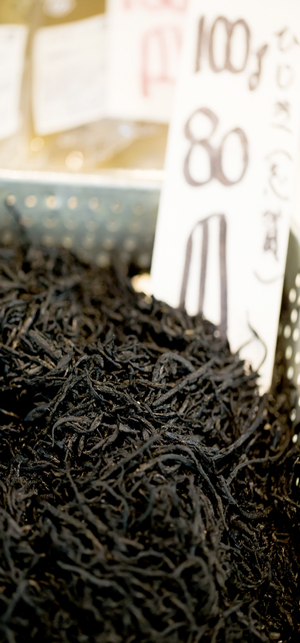Mar. 28, 2014 Research Highlight Biology
Seasonal seaweed highlights chemical diversity
A study of the chemical composition of seaweed demonstrates a new integrated approach to identifying variations within a species
 Figure 1: Hijiki seaweed is a popular food in Japan. Its chemical composition changes over the seasons, affecting its ability to absorb metals. © Jonathan Austin Daniels/ iStock/ Thinkstock
Figure 1: Hijiki seaweed is a popular food in Japan. Its chemical composition changes over the seasons, affecting its ability to absorb metals. © Jonathan Austin Daniels/ iStock/ Thinkstock
The well-known ‘nature versus nurture’ debate is very familiar to psychologists but has equal importance in molecular biology. Although most research into biological variation focuses on genetic differences among organisms, environmental factors can also cause great chemical diversity within the same species. Jun Kikuchi from the RIKEN Center for Sustainable Resource Science and Kengo Ito from Yokohama City University have now shown how the chemical components of seaweed change over the seasons1.
Environmentally induced chemical variations can cause food plants to vary in taste depending on where and when they are harvested. They can also cause certain indicator organisms in the ocean to respond sensitively to changes in pollution or climate. Recognition of the importance of these environmental factors has led to the emergence of a new field of research called environmental metabolomics, which involves mapping the molecular make-up of metabolic products in an organism.
Kikuchi’s team conducted a metabolomic study of the hijiki seaweed, Sargassum fusiforme, which has been a part of the traditional Japanese diet for many centuries (Fig. 1). Hijiki is known to strongly ‘biosorb’ metals from water and can be used to help to clean up contaminated waters—but this feature also means that the seaweed can become unsuitable for consumption.
Kikuchi and Ito’s study involved collecting samples of hijiki at least once a month for a year and analyzing the biomass using a suite of techniques, including nuclear magnetic resonance spectroscopy, infrared spectroscopy and thermal decomposition. The analyses provided a snapshot of the chemical composition of the seaweed at each point in time.
Then came the hard part. “The main technical challenge we faced was to combine all our diverse data into one integrated analysis,” says Kikuchi. “We had to fit curves to broad macromolecular signals and employ data mining methodologies, such as correlation network analysis and structural equation modeling.”
The analysis eventually revealed that the biomass concentrations of several trace metals—including aluminum, iron and magnesium—increased in July, while phosphorus and potassium decreased around the same time. The team also found that the structure of alginic acid, the main polysaccharide component of hijiki, changed during the seaweed’s growth cycle, affecting its ability to bind to metals.
Having demonstrated the success of their integrated analysis approach, Kikuchi is keen to apply the method to other aquatic settings. “We would like to apply a similar data mining methodology to samples from fish and natural sediments,” he says.
References
- 1. Ito, K., Sakata, K., Date, Y. & Kikuchi, J. Integrated analysis of seaweed components during seasonal fluctuation by data mining across heterogeneous chemical measurements with network visualization. Analytical Chemistry 86, 1098–1105 (2014) doi: 10.1021/ac402869b
